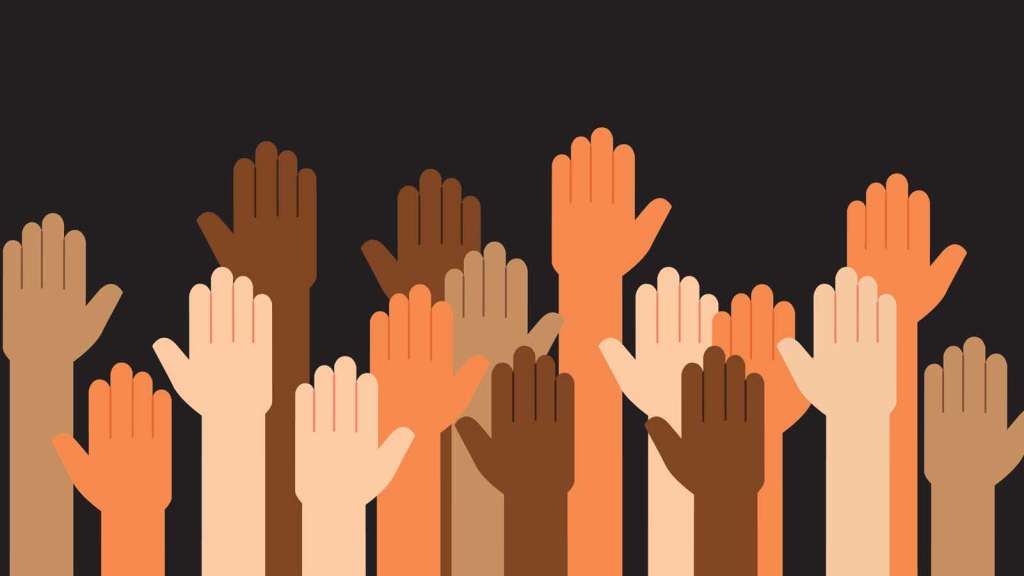Between news bulletins on TV and conversations being had at home and in the world currently, it’s fair to say that kids are probably asking some tough questions at the moment.
With global attention firmly on the issues of race, police brutality and deaths of BIPOC at the hands of law enforcement, there’s never been a better time to talk to your kids about racism and what it means to be an anti-racist ally. While the child’s age will dictate the depth of your conversations, starting this early on in childhood is important.
Many previous generations of white people have taken the route of teaching children to be colourblind — simply taking people on face value and disregarding their skin tone. While this might sound well and good in theory, we simply can’t rely on people to treat everyone the same (which has been proven time and time again in history). And, this approach does nothing to dismantle the systematic racism that is baked into our society.
“I’m not going to mince words — raising your kids to be colourblind is just straight dumb,” author and speaker, Doyin Richards, told TODAY. “And, not only is it dumb — it’s dangerous. By doing the whole, ‘We’re the same,’ thing, you’re dismissing what a Black kid or any person of colour deals with.”
Instead, Richards recommends teaching your children to be conscious of race, as these differences are something to be celebrated.
“Teach them to be like, ‘This black kid or this Mexican kid has had a different life experience than I have as a white kid, and that’s what makes it great. I see their differences and I embrace those differences and want to learn to be a better and more productive citizen going forward,'” he said.
Starting this conversation from a young age will also make a big impact in the long run. Waiting until your children are older means that the implicit bias taught to us by society could already be working against these conversations.
“Starting early and remaining consistent can help children to buffer the toxins of mainstream society,” clinical psychologist, Afiya Mbilishaka, told The Washington Post. “Setting the stage for a positive outlook on culture allows for a secure ground to unpack systems of white supremacy.”
If you’re worried about broaching this topic with your kids, remember that this is a luxury not afforded to BIPOC, with Black parents forced to educate their children in the concept of racism from a young age.
When it comes to tackling this subject, it’s OK to not have all the answers. Chances are that you’re still learning and educating yourself on how to be an effective anti-racist ally, so there will be many questions that you won’t know how to answer but hold space for them.
Begin the conversation by asking them questions. Do they know anything about recent events? How do they feel about everything going on?
“It is important for parents and caregivers to follow their children’s lead — explaining what they may not understand and answering questions they may have,” Ana Marcelo, PhD, an assistant professor in the department of psychology at Clark University in Massachusetts, told Healthline.
“This is a better approach than dismissing their questions or preventing them from knowing more about the recent events.
“I cannot emphasise enough the importance of talking to children about ethnicity, race, racism, oppression, and inequality. However, conversations about these topics should not only focus on the negative experiences involving race.”
As children are sponges, modelling anti-racist behaviour for them is one of the most important things you can do going forward. If a family member makes a racist joke in front of your children and you simply ignore the behaviour, that sets a precedent for your kids that a) it’s OK to make such jokes and b) it’s OK to brush over or ignore that behaviour in family and friends.
As with adults, using anti-racist resources like books is a great way to show children how to be an anti-racist. Investing in the following books can help make these conversations easier.
— Fair Skin Black Fella by Renee Fogorty: This is the story of Mary, a young Aboriginal girl who lives on a cattle station. Shunned by the other girls because of her fair skin, Old Ned, one of the community elders, finally speaks up. With words full of knowledge and wisdom, he teaches the girls that Aboriginal identity transcends skin colour and that family, community, country, culture and spirituality is what being Aboriginal is really about.
— Welcome to Country by Aunty Joy Murphy and Lisa Kennedy: Written by Aunty Joy Wandin Murphy, a most respected senior Wurundjeri elder of the Kulin alliance, ‘Welcome to Country’ is a very accessible welcome that introduces and gives meaning and explanation within the text to the customs and symbols of Indigenous Australia.
— Resist by Veronica Chambers: This one is great for kids who are slightly older as it profiles people like Frederick Douglass to Malala Yousafzai, Joan of Arc to John Lewis, Susan B. Anthony to Janet Mock. These remarkable figures show us what it means to take a stand and say no to injustice, even when it would be far easier to stay quiet.
These are merely a starting point and there are many more informative and helpful books regarding race and racism available for kids of all ages. We’ve also rounded up a bunch of helpful anti-racist resources for adults too, should you need some help in this area.
Doing this work isn’t comfortable and can be confronting but it’s way past time that we all actively participated in anti-racist behaviour, both personally and with our children. There are a ton of resources and more advice online, so don’t be afraid to head to Google should you be asked a question you can’t answer or you need new resources for your kids.







